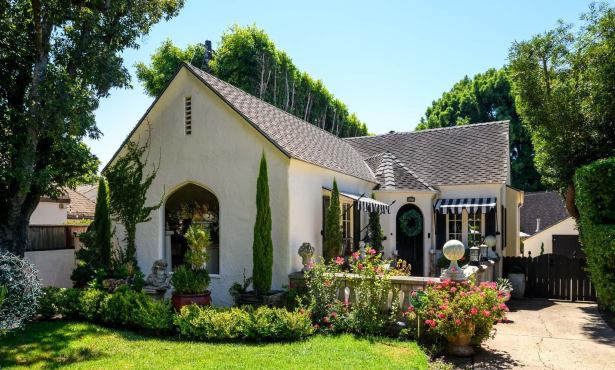Local Control over Goleta Growth
Can Citizens Affect CHP Location, Oil Trains, Airport, and Housing Issues?
The rallying cry at the time of incorporation of Goleta was “Local Control — Local Decision Making,” and in many areas that is what we got. But Goleta is not an island, and decisions made by surrounding jurisdictions such as UCSB, the Santa Barbara Airport, and Santa Barbara County often have impacts within the city. And while many decisions are in Goleta City Council’s hands, they are often constrained by regulations and edicts at the federal, state, and county level.
The big prize for cityhood was land use planning — the right to decide what gets built, how much, and where. But when Goleta began to develop its first general plan, a major consideration was a requirement from the State Housing and Community Development Department that the city zone for over 2,000 new housing units, a percentage of which would have to be affordable to low- to moderate-income residents. This reflected the state’s analysis of the need for more housing for a growing population and an increasing number of workers commuting from Ventura and North County to jobs on the south coast.
In developing the general plan, the city had to designate sites on which housing could be built, and this had to be done while preserving open space for community enjoyment. The chosen sites lay between US 101 and Hollister Avenue, close to job sites, the university, and transportation along the Hollister corridor. They were zoned at densities of 20 units to the acre in an effort to ensure that they would be affordable to the majority of local residents. We are now seeing several of these two- and three-story rental housing developments going up, to the dismay of many who voted for cityhood in the hopes of keeping Goleta a city of single family homes in low density suburbs. But time, growth, and need for affordable housing overran that vision, though the city still maintains control over design, height, view sheds, and traffic patterns.
A more blatant exercise of state power is a proposal by the California Highway Patrol (CHP) to relocate its offices, now on Calle Real, to Hollister Avenue between the Hideaway residential development and Ellwood Elementary School. According to the state, this project will have a 148-foot-tall radio antenna, a fuel island with gas tanks, parking and storage areas, and undoubtedly traffic going in and out at all hours. This is a major concern for the neighborhood, with children crossing the street going to and from school. The city has no say in this project. There will be an environmental impact report (EIR) in the near future, but the ultimate decision rests with the state. A newly formed group, the Western Goleta Coalition, is actively working to persuade the State CHP to find a more suitable site for this area wide facility. Watch for notices of the release of the EIR and be prepared to speak to this issue.
Another project affecting the same neighborhood, as well as many others, is a proposal to build a railroad spur from the main railroad line to the Santa Maria Refinery in Nipomo in San Luis Obispo County. The purpose of this spur would allow up to five oil trains per day carrying dangerous crude oil to reach the refinery either from the north or the south. The first decision on this project rests with the San Luis Obispo County Planning Commission, which will be reviewing the EIR within the next month or so. The cities of Carpinteria, Santa Barbara, and Goleta, which all lie along the railway corridor, have all urged the SLO Planning Commission to deny the project. This is another one to watch.
And speaking of oil, there is Venoco. Goleta has jurisdiction over oil facilities on land, but offshore projects are subject to the State Lands Commission. To take just one example, Goleta has the last remaining tidal oil pier in the state, Pier 421. It has been idle for about 10 years but Venoco would like to restart it, because the company fears a pressure build up could lead to a spill. Goleta wants to close it down, but the State Lands Commission gave Venoco the go-ahead to restart the well. Goleta, however, still has control of what happens to the oil on land and is suing the State Lands Commission to reverse this decision.
Then there are our neighbors, the Santa Barbara Airport and UCSB. Early in cityhood, Goleta opposed the westward relocation of the main airport runway, which brought the flight path closer to some areas of the city. The westward extension was approved, however, and Storke Road, and the development along it, ended up within one mile of the end of the runway. It also changed the location of the restricted over-flight zone. A strip mall, currently being built across Hollister from the Marketplace, is now under the flight zone and may be one outcome of this realignment. The site was originally going to be for houses. This is another example of a land use change over which Goleta had no control.
UCSB is adding 5,000 more students and 1,500 more faculty and staff and is building housing to accommodate them. Goleta and the county were able to negotiate mitigations of this growth with UCSB; nonetheless, as housing gets built it contributes to the loss of open space and views that make Goleta special.
Unlike the City of Santa Barbara, Goleta’s water district and sanitary districts are separate entities. In times of plenty, they have little effect on city planning. But today, in the drought, the water district is beginning to control new hookups and development.
Finally, on a positive note, two years ago Goleta citizens took matters into their own hands and passed an initiative, with a 70 percent vote, that would require any proposed development on agricultural parcels of 10 acres or more to go to a vote of the people before moving ahead.
We have a web of decision makers, each in control of its own piece of decision-making. With this, through advocacy, persuasion, and sometimes litigation, we strive to make our community what we want it to be.



